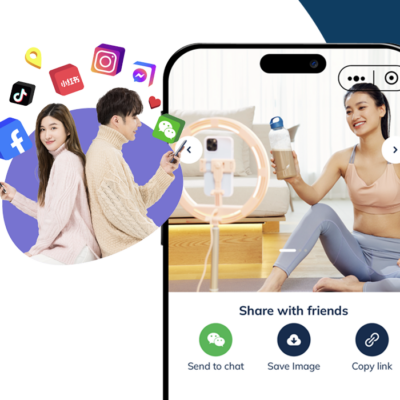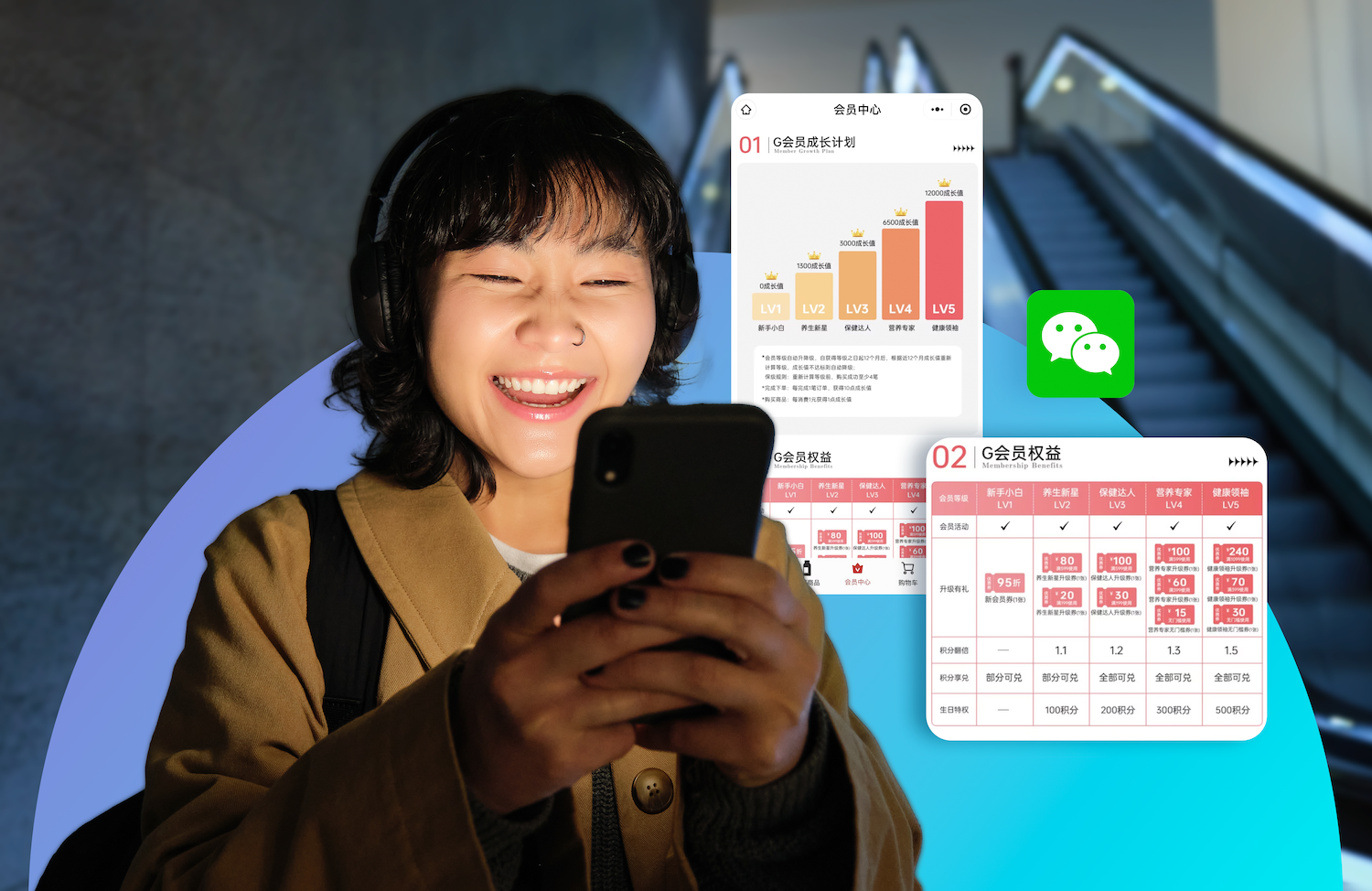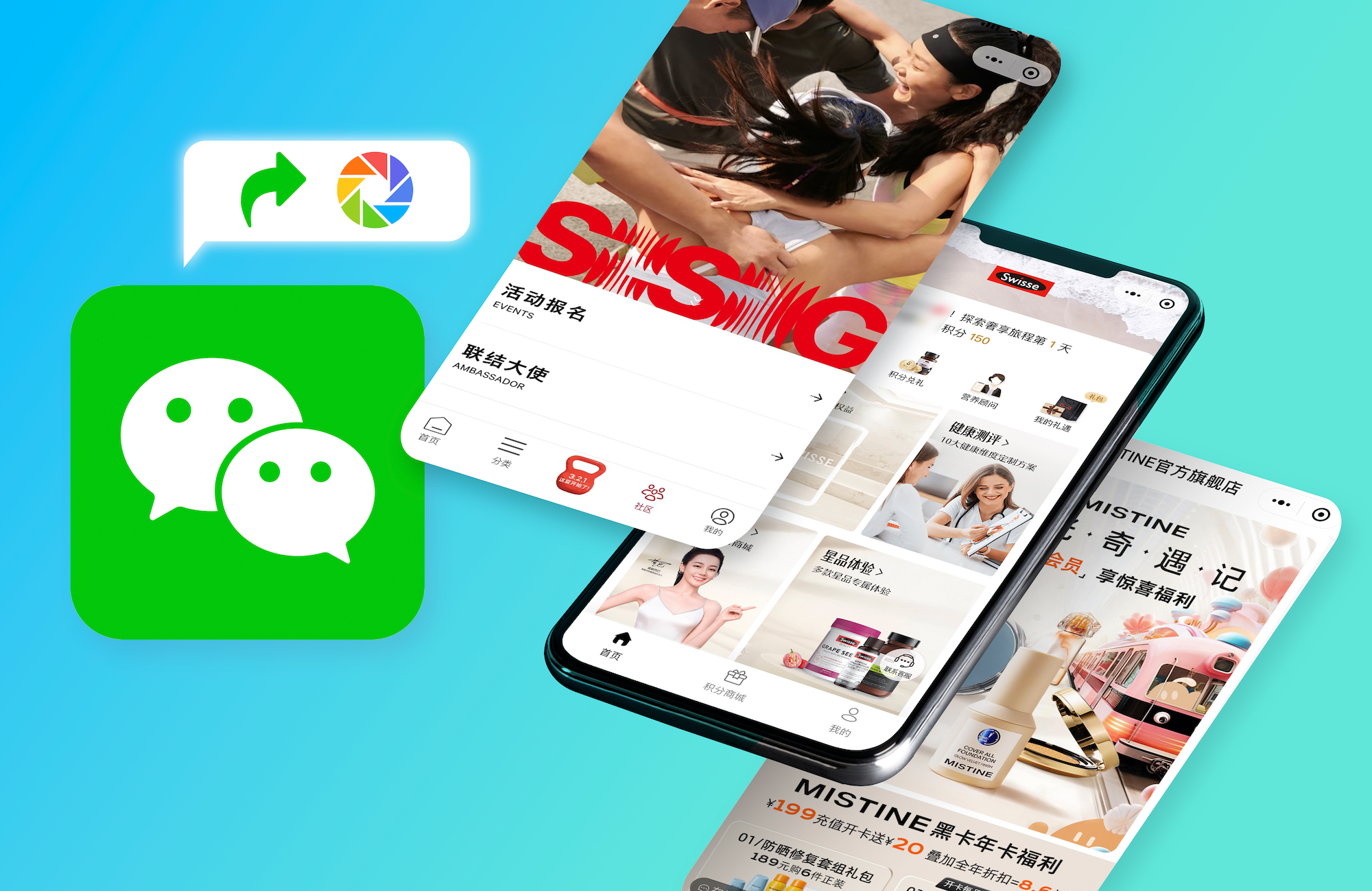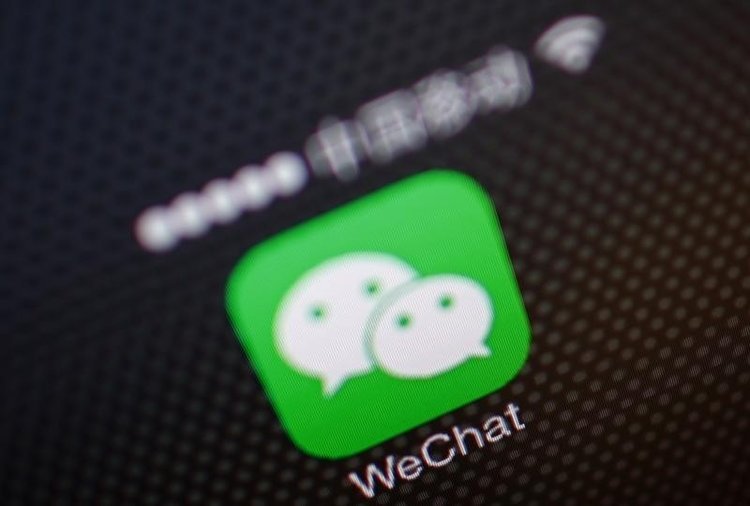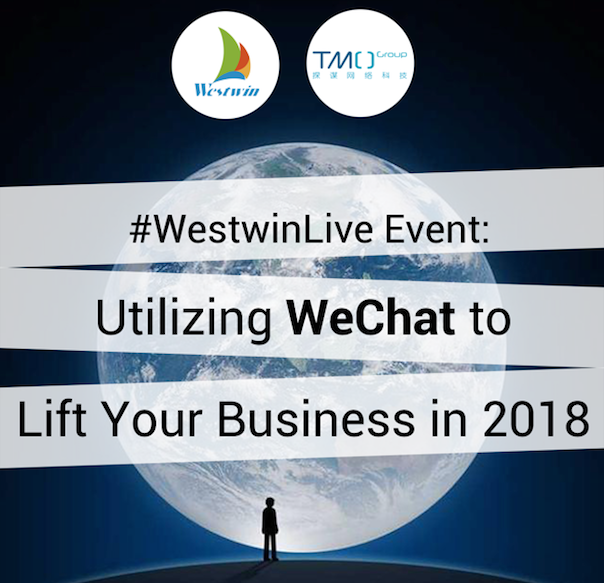As omnichannel retail continues to reshape consumer behavior in China, Mini-Programs or "applets" have proven to be a crucial tool for brands looking to create seamless, engaging experiences. By integrating online and offline shopping, they empower retailers to deliver personalized, location-based services to their customers. With 949 million monthly active users as of May 2024, WeChat Mini-Programs have become essential for brands looking to thrive in China’s dynamic retail landscape.
According to Tencent data from 2022, foreign businesses that launched mini-programs in the previous two years saw an increase of over 600% in annual transactions. In this post, we’ll explore the must-have features for a successful New Retail Mini-Program and how these features can be enhanced with
Learn how TMO's WeChat Development and Cross-platform Mini-Program Development services can help you implement a successful O2O or multichannel eCommerce strategy.
The Importance of O2O (Online-to-Offline) for Brands in China
Online-to-offline strategies are a cornerstone of retail in China, where the lines between online and offline shopping have increasingly blurred. O2O refers to a business model that integrates online channels with physical stores, driving customers between the two environments in ways that benefit both. Brands that successfully adopt O2O strategies can create seamless, omnichannel experiences that not only improve customer satisfaction but also boost sales and brand loyalty.
Despite being one of the most digitally connected markets in the world, offline retail still plays a significant role in China, especially in industries like beauty, supermarkets, apparel, and luxury. Chinese shoppers value the ability to touch and feel products, especially high-value items, but they also enjoy the convenience of online browsing, price comparisons, and mobile payments. This has led to a strong demand for integrated experiences where consumers can switch between online and offline shopping effortlessly, and Mini-Programs have been instrumental in driving O2O commerce transformation:
- Increased Foot Traffic to Stores
- Personalized Shopping Experiences
- Convenient In-Store Services
- Bridging the Gap Between Discovery and Purchase
- Boosting Customer Engagement
- Omnichannel Loyalty Programs
Increase retail circulation and deliver seamless online and offline shopping experiences with our Omnicommerce Solutions for Retail.
Must-have Mini-Program Features for Retail Success
1. Barcode-enabled Shopping
Many brands now offer self-service shopping through code scanning on mobile devices. Customers can take a product they come across in a physical store, scan its barcode using the store's Mini-Program, and purchase it right there without needing to take it to a cashier or a self-service machine.
However, customers must ensure that they selected the correct branch of the store in the app when making their purchase, or else they will have bought a product in a different store, and cannot walk out with the one they're holding in the store they're actually in!
This problem can be neatly sidestepped by inviting users to scan a store-specific QR code when they enter the branch, or automatically directing users to the correct store within the Mini-Program via their phone's real-time location.
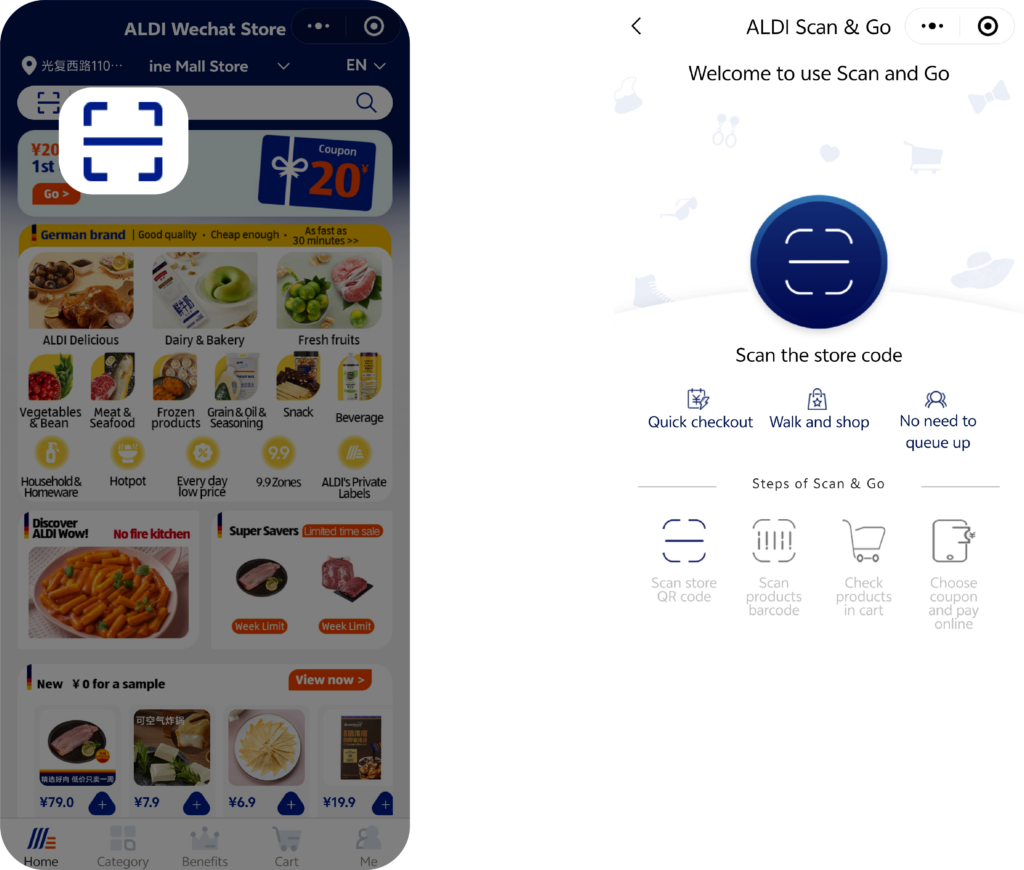
2. Automatic Address Acquisition
For brands operating multiple store locations, it’s essential to offer real-time positioning functionality within the Mini-Program. This allows users to browse products that are available at their nearest store and even pick up their purchases from the location most convenient to them. Manually adjusting location settings also ensures customers can shop for home delivery while out and about.
You may also enjoy our articles on New Retail in Chinese eCommerce: Fixed Inventory ModelWe profile one of the two leading inventory models that has arisen in the innovative logistics environment of the New Retail era.Fixed Inventory and New Retail era in Chinese eCommerce: Mixed Inventory ModelOne of the models shaping China's New Retail Era, the mixed inventory model presents numerous opportunities for optimized customer experience.Mixed Inventory models for New Retail logistics.
For users opting to have goods delivered to their homes, it is important to re-confirm whether their home address is within the delivery range of the store they selected before payment is completed.
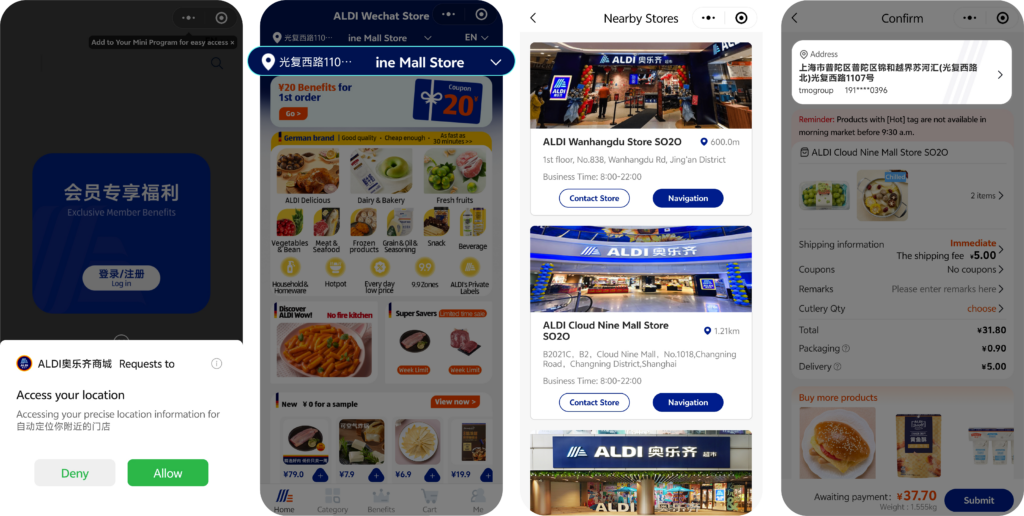
real-time inventory, as well as pre-filling the delivery address.
3. Click-and-Collect (Buy Online, Pick Up in Store)
Click-and-Collect functionality is essential for blending online and offline shopping experiences. With this feature, customers can purchase products through the Mini-Program and choose to pick them up at a physical store. This not only enhances convenience but also increases foot traffic to brick-and-mortar stores.
For users who visit a branch in person to pick up their goods, it is imperative to ask the user to confirm their choice of branch before payment is completed. Additionally, implementing push notifications for pick-up reminders and status updates can further elevate the user experience.
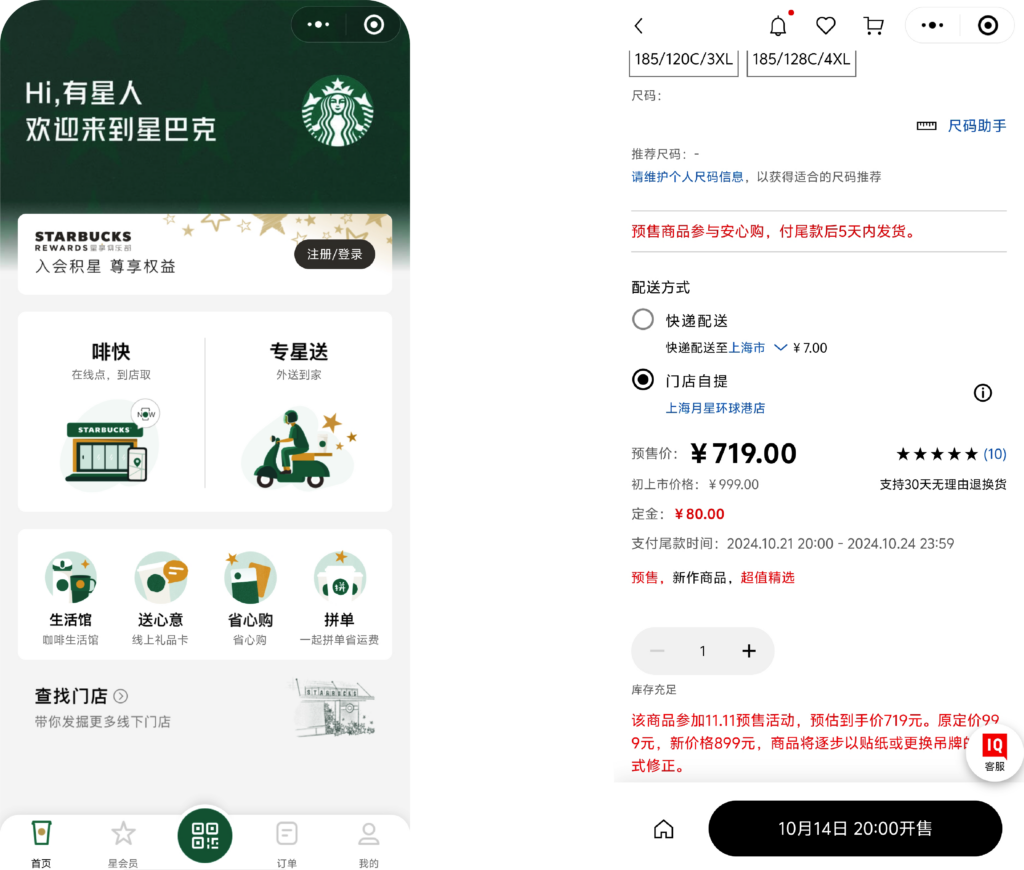
4. Delayed Login
For new users, it’s important to allow browsing without the barrier of immediate login. By delaying the login step until users are ready to check out, you can reduce friction, help them warm up to the platform, and increase the likelihood of conversions.
Therefore, many brands are moving the login step until after a user adds a product to their cart or clicks on the account page link. This means new users can browse without worrying about setting up or logging into an account until they're actively interested in making a specific purchase. As an example, Baidu's official data shows that Suning's Mini-Program saw an approximate 110% increase in login rate after delaying its login step in this manner.
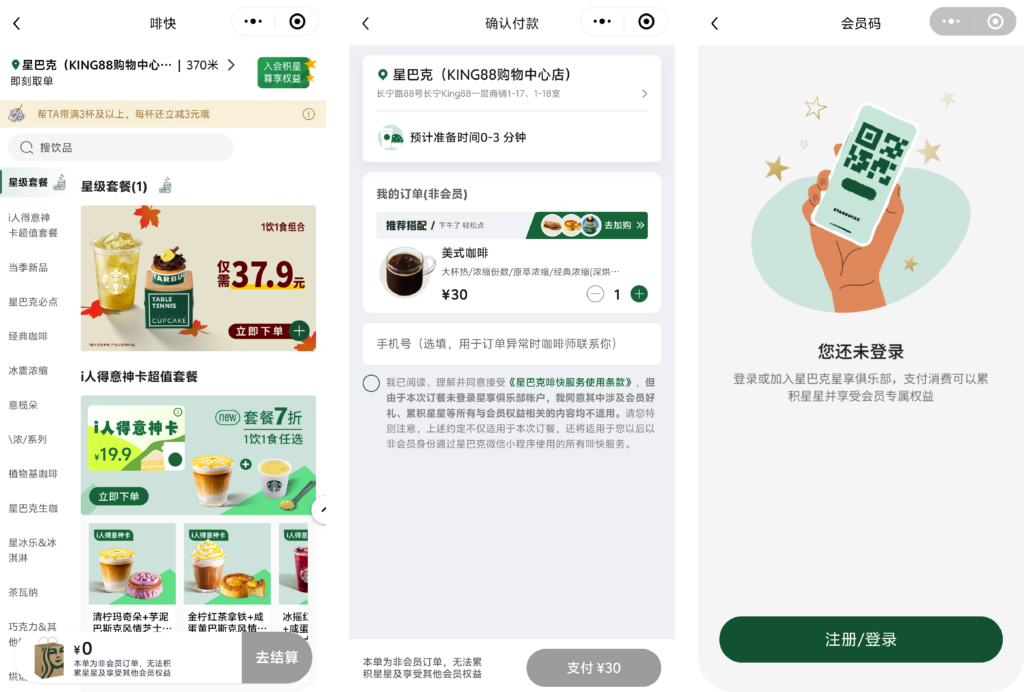
5. Banners, Pop-ups and Prompts
This is also a function that any eCommerce app or Mini-Program should have in general. Brands can use sliding banners and pop-ups that overlay on top of the main interface to suggest or advertise products, provide coupons or vouchers, and facilitate check-out and cart functionality. Up-selling using such features has proven particularly successful on several platforms.
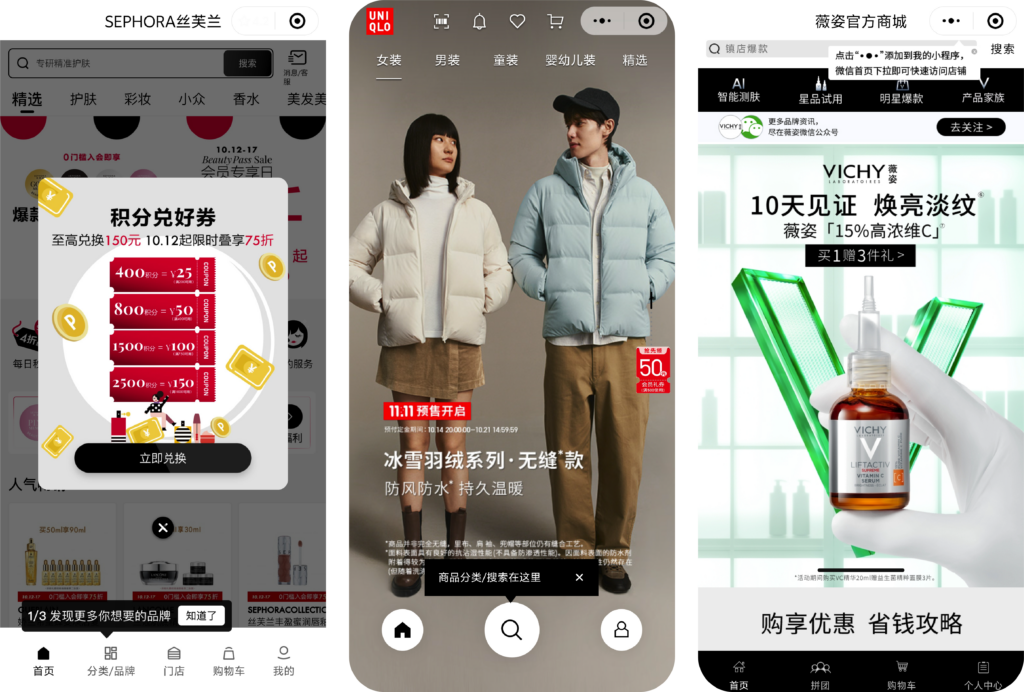
6. Template Messages and Status Tips
Keeping customers informed about the status of their orders is critical. By sending real-time updates via template messages—such as order confirmation, shipment, courier receipt, or arrival at store pick-up points—you can enhance user satisfaction and reduce anxiety about delivery times.
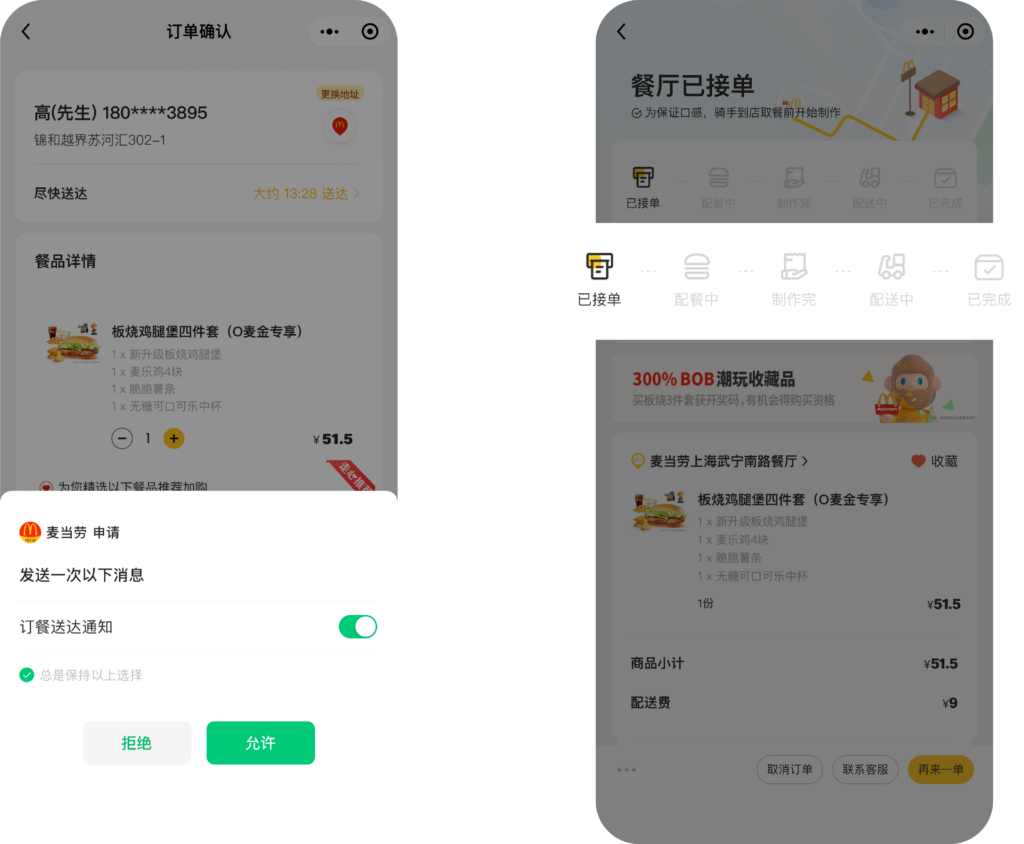
7. Product Customization
A basic function in the mind of many consumers, and so one that is fast becoming one of the most essential New Retail Mini-Program features for many businesses. Users expect to be able to customize their purchase when they might be able to in offline equivalents.
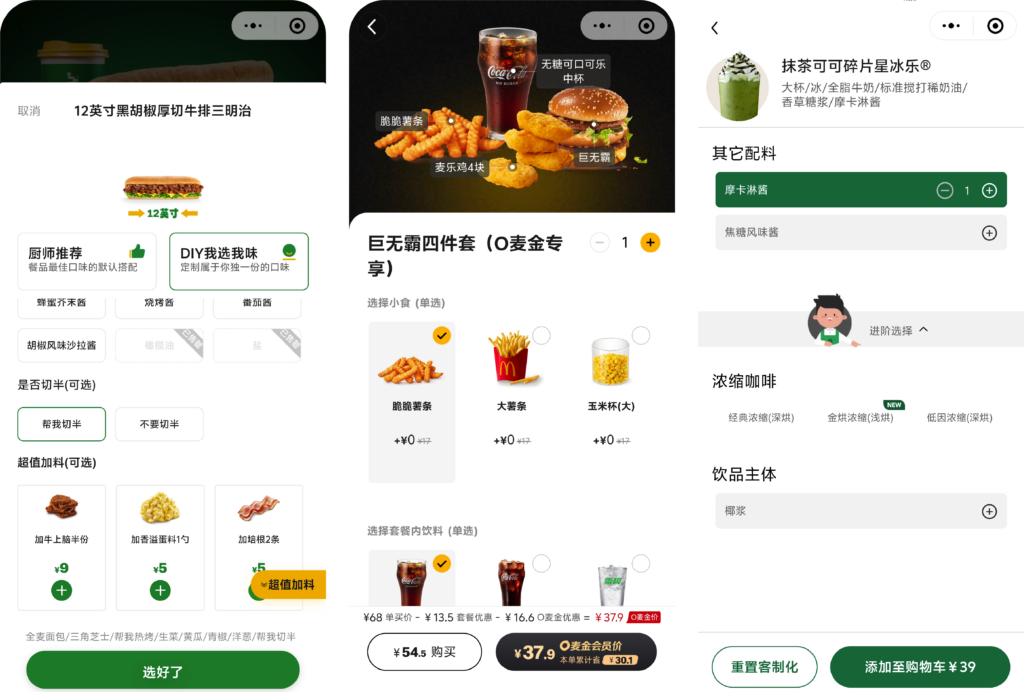
8. Social Shopping
Mini-Programs provide fertile soil for social eCommerce, and brands can boost engagement by incentivizing users to share Mini-Programs with their social circles. For instance, wellness Mini-Programs generate shareable QR codes after a user completes a health assessment, inviting friends to take the same test. Shopping apps allow users to send personalized gift cards to friends, while group-buy deals and referral bonuses offer discounts when friends join purchases. These strategies not only increase brand visibility but also encourage new users to interact with the Mini-Program, driving organic growth.
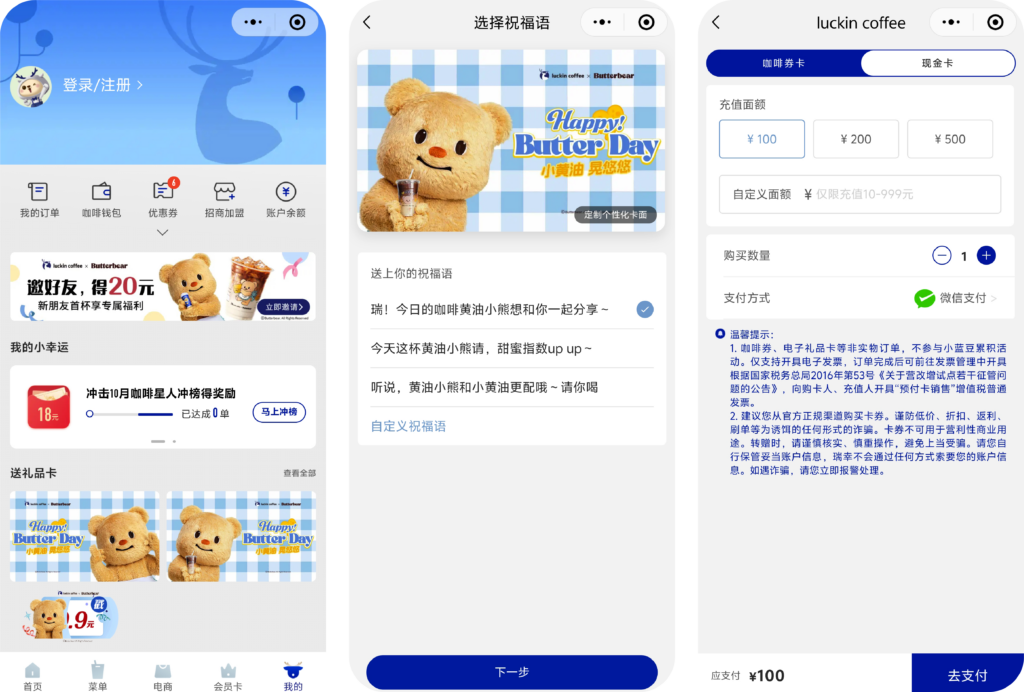
Other features like group-buying and referral programs, which allow users to share deals with friends, have become incredibly popular. For example, fruit and veg retailer BaiGuoyuan has successfully expanded its user base by promoting group-buy deals through its Mini-Program, leading to over 45 million registered users.
Pushing group buying as a business model has proven to be a shortcut to user growth for the company. As users identify desired products or deals, they then reach out to friends and acquaintances. These next-step consumers go on to do the same, quickly expanding the service's user base.
The Super App Ecosystem in China: The Future of Multichannel & New Retail
China's super app ecosystem is a powerful force in the country's digital landscape, offering brands a unique opportunity to engage with users through Mini-Programs across multiple platforms. While WeChat is often the first platform that comes to mind—with over 1.3 billion monthly active users and a dominant Mini-Program ecosystem—other super apps, such as Alipay, Douyin (TikTok), Toutiao and Baidu, have also developed thriving Mini-Program environments that cater to different business needs and user behaviors.
Depending on the nature of your business, leveraging these additional platforms can be highly beneficial. For example:
- Douyin excels in eCommerce and entertainment, allowing brands to use interactive videos and live streams to drive sales.
- Alipay is deeply integrated with financial services and payments, making it ideal for businesses offering transactional services like ride-hailing, food delivery, or healthcare.
- Baidu’s Mini-Programs tap into the power of search, enabling brands to offer service listings and targeted search results within China’s leading search engine.
In general, WeChat and Alipay's Mini-Programs provide the best integration with offline scenarios. This is because both are online payment services. Meanwhile, Douyin (TikTok) has an advantage when it comes to short video content and KOL cross-promotion. Baidu's Mini-Program can be leveraged for promotions and advertising to those already using the Baidu app for searches.
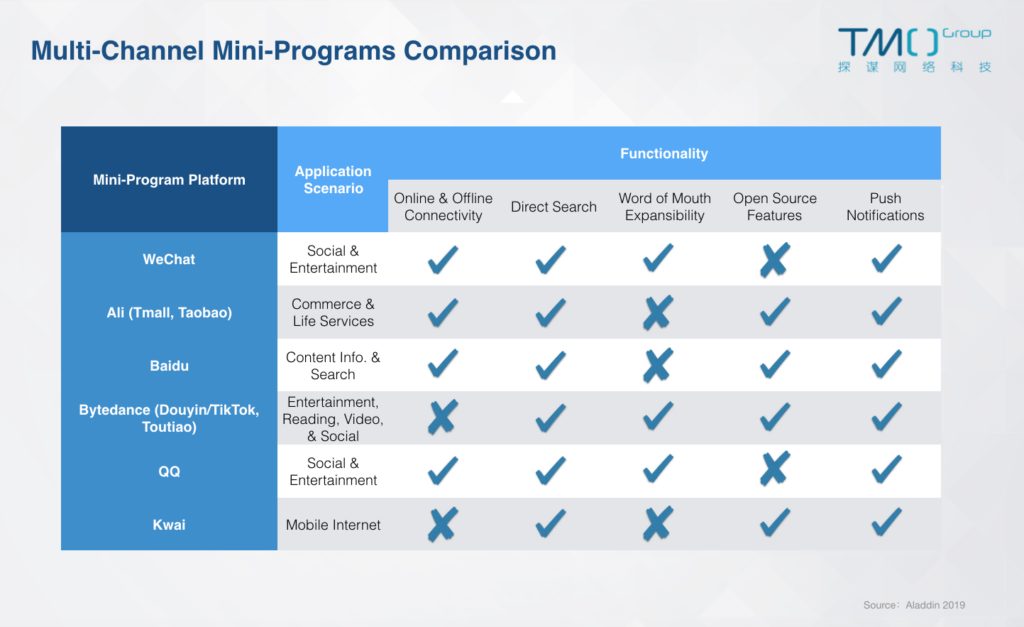
TMO's "One-time Development, Multi-platform Deployment"
Despite WeChat's dominance, brands that want to build a truly comprehensive multichannel strategy should consider deploying Mini-Programs across these other platforms. However, building Mini-Programs for each platform from scratch can be time-consuming and resource-intensive.
Additional to our dedicated WeChat Development Services, TMO also has experience building a "One-time Development, Multi-platform Deployment" framework that allows you to quickly adapt your Mini-Program to different platforms such as Douyin, Alipay, and Baidu, providing a seamless multichannel experience for your customers. Whether you're focused on eCommerce, financial services, or lifestyle apps, this solution can help you grow your business efficiently across all major digital touchpoints in China.
By integrating a cross-platform approach, your brand can maximize visibility, streamline customer experiences, and tap into the full potential of China’s super app ecosystem. Learn more about our Cross-platform Mini-program Development.
As the retail landscape continues to evolve, embracing omnichannel strategies and leveraging Mini-Programs is no longer optional—it’s a necessity. By incorporating features like click-and-collect, in-app guides, location-based services, and seamless cross-platform integration, you can ensure your brand stays competitive and connected with customers.
